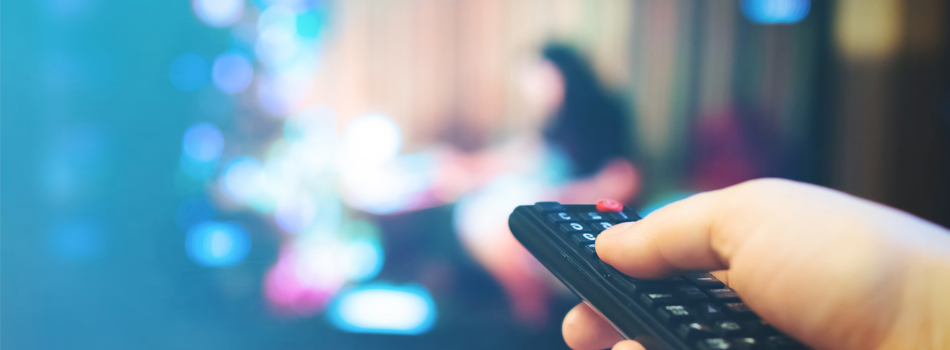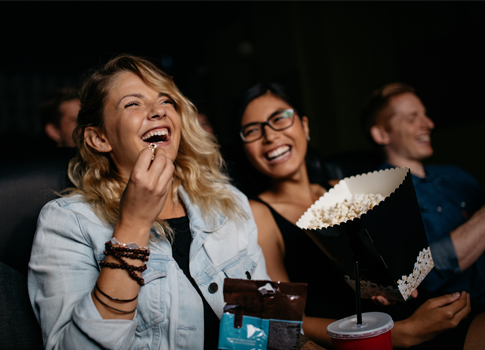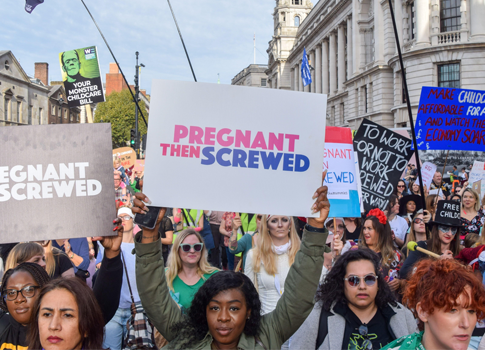In March 2020, the UK was given a clear instruction: Stay. At. Home. The pubs were shut, the office closed, and loved ones told to keep their distance. Now, almost 12 months to the day, it’s clear that for many this instruction meant one thing: Stay At Home… and watch TV.
TV has long been heralded as a trusted source of news and information but now it was a connection to a world we were no longer permitted access. Yet with our lives plunged into ever evolving uncertainty, to turn to our TV sets was also a deliberate act of disconnection. It was distraction and escape.
It’s therefore no surprise that audiences chose to binge boxset favourites or challenge themselves to 35 hours of Married At First Sight Australia. Our TVs became a portal into a time ‘before’, and as that latest episode blared through our living rooms, we were warmed by the comforting sense of something familiar. Yes, TV helped us to forget, it also acted as a reassuring reminder; quite possibly, everything was going to be alright.
And the evidence is no longer anecdotal.
Thinkbox report that in 2020 every form of Broadcast TV grew by 5% – the average person watched 3 hours and 22 minutes a day, a 10 minute increase on 2019. Yet whilst Broadcast Video has always been King, the gradual decline of linear consumption has wrongfully always taken the limelight. As the choice of viewing platforms widen, and viewing continues to proliferate, the effectiveness of Linear TV and Broadcaster VoD has faced predictable scrutiny. So it is with the release of these latest figures from Thinkbox that we are reminded of the facts: TV reach remains unparalleled. Cue a sigh of relief from TV Planners everywhere.
The COVID effect
One thing is for certain, (and I’m not sure it’s something that can be said for all of us), the Pandemic has done wonders for TV’s image.
Yet for advertisers, the surges in audience viewing only tell half the story. Not only did such an increase in eyeballs cause an incredibly attractive deflationary market, but as revenue plummeted, UK broadcasters were given a bit of a shock. Whilst pandemic-friendly brands would continue to spend and maximise this unique market opportunity, others were forced to stand still and wait.
It became clear: TV advertising spend was no longer a given. The networks would have to adapt.
2020 therefore saw a world once traditionally steeped in long lead times and stringent booking deadlines, behaving with flexibility and agility. Late booking penalties and cancellation charges became so very 2019. Media agencies could present TV Plans that were in some cases 30, 40, 50% cheaper, and were suddenly as easy to switch on as a Facebook campaign.
“Want to go live next week? Not a problem.”
For brands that could go live, TV was a no-brainer.
So, what happens next?
Writing this in March 2021, I feel I can say confidently, albeit still cautiously, that we look to a relatively ‘lockdown-free’ future. But as this confidence becomes less cautious and ‘normal’ life starts to reshape, one thing is for certain: inevitably, although not immediately, media inflation will follow suit.
It’s therefore true that no matter how hard we try, even the most competitively planned TV strategy will not cost less than it did in 2020. But Broadcast media should not be a hard sell. Its value as a media channel post-lockdown is about so much more than cost.
In the eyes of the consumer, the pandemic will have undoubtedly presented a period of high anxiety and uncertainty. On varying levels by sector and target demographic, this will influence how audiences engage with brands over the coming year.
For some, the return to the new-normal could be a shaky one. The re-adjustment to a life out of lockdown is likely to see consumers turn to brands they recognise and can rely on. A source of stability in a time of change and flux. In a study conducted by YouGov for Campaign magazine, TV came out on top as the most trusted media channel available to advertisers, with only 1 in 10 Brits trusting ads served on social media. TV’s role within a media strategy will be a vehicle to convey a sense of reassurance. To engage with a brand on TV is not to be let down. TV will always triumph over other channels in matters of reach and scale, but we are entering a period where its power to de-risk products for consumers will become all the more important.
Conversely, while some brands will be appealing to audiences with a desire to settle back into old routines, others will be tapping into a consumer appetite for the new. While the rise of Direct To Consumer brands can be accounted for by the pandemic’s impact on certain sectors, their popularity has also been driven by a consumer need to spice up an otherwise uneventful lockdown existence. For some, the enduring ‘Stay At Home’ message will have created a restless sense of urgency to make up for ‘lost’ time. Akin to January’s ‘New Year, New Me’ mantra, we are likely to see consumers look to start afresh by experimenting with brand choices and trying something new.
For brands looking to ride this wave of consumer ‘Post-Lockdown Energy’, TV will be vital. Whether you are a new, emerging brand or an established name promoting a new product or service, TV has an indisputable power to legitimise propositions. Explained simply: The ‘As Seen On TV’ Effect.
Pandemic or no pandemic, we know that TV advertising does not cost have to cost the earth, but in their latest research Signalling Success, Thinkbox reminds us that the public perception of TV as an expensive medium, is of great benefit to the advertiser. To advertise on TV is to emit a high level of financial strength and credibility. Looking to add something different to that post-lockdown wardrobe? It’s most likely that new Fashion brand you’ve seen on TV that’s going to pique your interest.
What awaits the UK post-lockdown remains unknown. But for TV Planners, one thing is for certain. As restrictions slowly lift, advertiser revenue will gradually return, and viewing habits will normalise. Yet here marks the beginning of opportunity, and not the end.
Just as our return to a ‘new normal’ will be slow and gradual, consumer behaviour will take a while to settle. With habits still in flux, TV as the most trusted of all media channels faces the biggest opportunity to influence. Whether brands represent that reassuring steady hand, or that enthusiastic thrust into Post-Lockdown life, TV will remain the most effective channel of choice.






